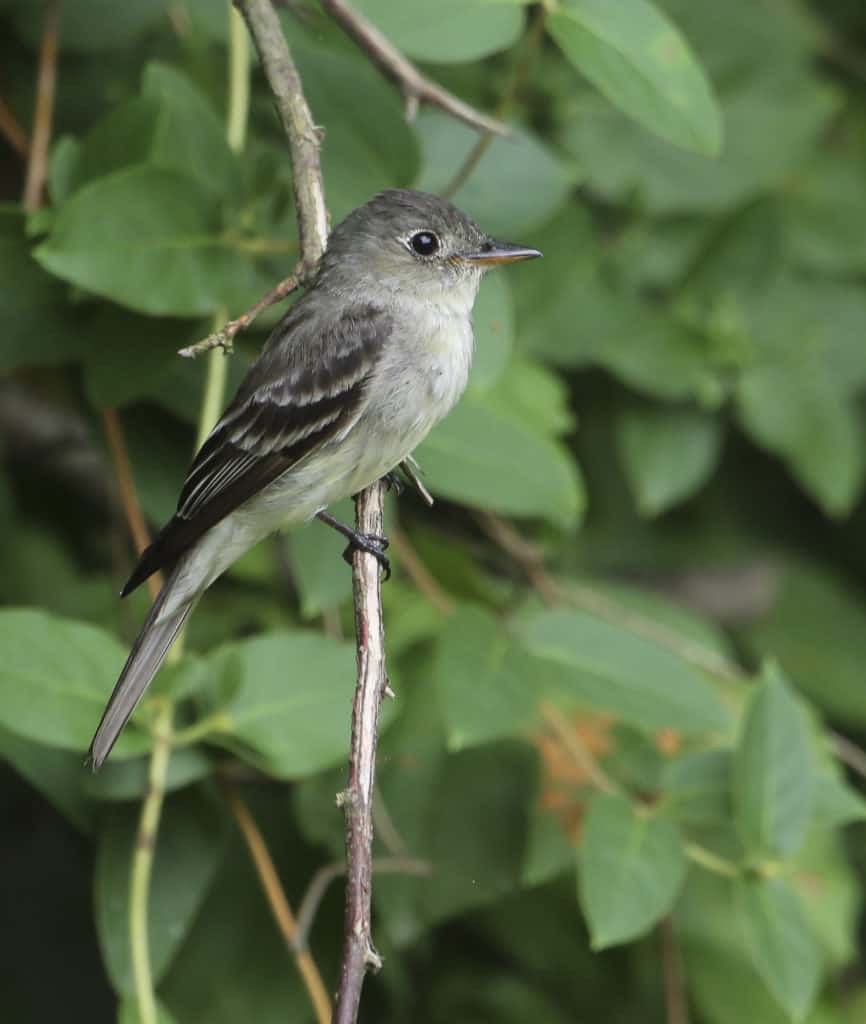Creature Feature

The Eastern Wood-Peewee
By Wayne Bierbaum
Flycatchers, as the name implies, are a family of birds that eat flying insects. When I visit Bombay Hook National Wildlife Sanctuary in Delaware, one particular bird uses my car as a feeding station.
The dusty road in the sanctuary attracts horseflies that follow cars, attracted to the warmth and contents. There is one spot on the drive where a small flycatcher will fly around my car grabbing the horseflies. It seems to be there year after year. In July, at the height of fly season, I drive around the first pond, make a left and then stop, and there is the bird. The bird is one of the cutest, a delicate little bird called an Eastern wood-peewee.
Some birds are named by the sound they make and a peewee is one of them. They say the second part of their call higher than the first but the name is very close to the sound they make. The All About Birds website by Cornell Ornithology has a huge free library of bird sounds. Listen to the wood-peewee: www.allaboutbirds.org/guide/Eastern_Wood-Pewee/sounds.
They are very common forest birds and often found in even small woodlots. They migrate into our area around early April. Wood-peewees are grayish with a pale chest and white bars on the wings. They are small active birds, a little larger than a chickadee. They nest high in the trees and have one brood a year. In fall, they migrate to South America.
I often see them at the edge of a forest. They can be seen sitting tall, straight and still on a small twig and suddenly swooping in a circle to catch some small flying bug and landing at or near the same spot. I can hear them calling deeper in the woods but they are harder to spot in the thicker forests.
Although human land development has cut the population of peewees by over 50 percent, they are not considered endangered. Once you know what they sound like, you can find them all over, even in a small two-acre wood.
